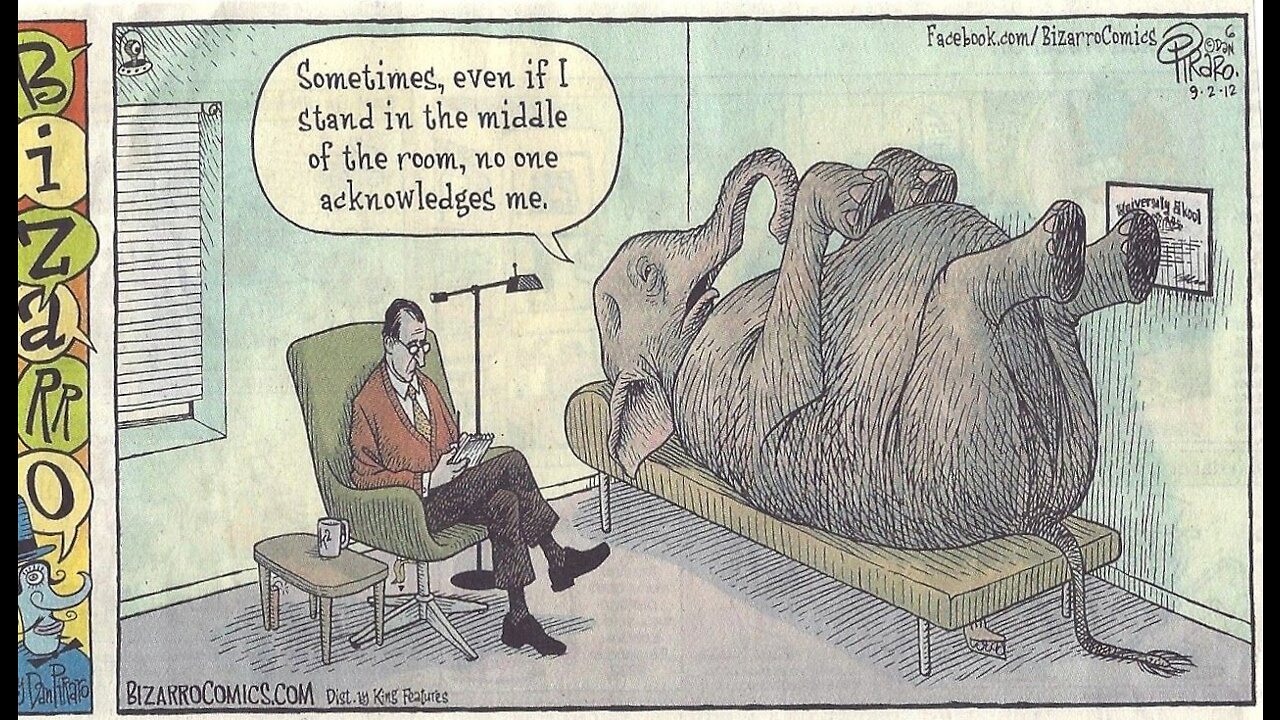Premium Only Content

That's not socialism, this is! That's not a conceptual framework, this is!
International Journal of Qualitative Methods
In this article I have proposed a new qualitative method for building conceptual frameworks to better understand phenomenon linked to multiple bodies of knowledge situated in multiple disciplines. First, it includes a redefinition of concept, conceptual framework, and conceptual framework analysis. Concept has some components that define it. All concepts are characterized by a number of features: an irregular contour defined by its components; a history, some “bits” or components that come from other concepts, and elements that can be traced back to other concepts. Conceptual framework is defined as a network, or “plane,” of linked concepts that together provide a comprehensive understanding of a phenomenon. Each concept of a conceptual framework plays an ontological or epistemological role in the framework. Conceptual frameworks are not merely collections of concepts but, rather, constructs in which each concept plays an integral role. They provide not a causal/analytical setting but, rather, an interpretative approach to social reality. Finally, they are not determinist frameworks.
As we have seen, conceptual frameworks can be developed through an eight-phase qualitative process of analysis, referred to here as conceptual framework analysis. As building a conceptual framework is a process of theorization, it uses grounded theory method rather than a description of the data and the targeted phenomenon. The sources of data are theories generated by theories in multiple disciplines, which become the empirical data of the conceptual framework analysis carried out in the article. The data themselves are composed of various texts addressing the social, cultural, political, or environmental phenomenon in question and the multidisciplinary literature on the subject.
Although conceptual framework analysis certainly has its limitations - such as the fact that different researchers may have different conceptions of the same phenomenon and may create different “planes” and conceptual frameworks, and possible difficulties finding suitable texts and data - it also offers some important advantages.
Flexibility. It is based on flexible conceptual terms rather than rigid theoretical variables and causal relations.
Capacity for modification. Conceptual frameworks can be reconceptualized and modified according to the evolution of the phenomenon in question or as a result of new data and texts that were not available at the time the framework was first developed. This is consistent with the basic premise that social phenomena are evolutionary and not static.
Understanding. Conceptual frameworks aim to help us understand phenomena rather than to predict them.
The proposed methodology is composed of the following main phases.
Phase 1: Mapping the selected data sources
Phase 2: Extensive reading and categorizing of the selected data
The aim in this phase is to read the selected data and categorize it both by discipline and by a scale of importance and representative power within each discipline. This process maximizes the effectiveness of our inquiry and ensures effective representation of each discipline.
Phase 3: Identifying and naming concepts
Phase 4: Deconstructing and categorizing the concepts
Phase 5: Integrating concepts
Phase 6: Synthesis, resynthesis, and making it all make sense
Phase 7: Validating the conceptual framework
Phase 8: Rethinking the conceptual framework
-
 15:14
15:14
Food for the Faithful
1 year agoIdentity politics, Anti-Semitism, and WOKE
25 -
 47:03
47:03
Barry Cunningham
10 hours agoPRESIDENT TRUMP MEETS WITH THE PRIME MINISTER OF JAPAN!! AND MORE NEWS!
57.6K30 -
 1:18:29
1:18:29
Flyover Conservatives
1 day agoThe Dollar Devaluation Playbook: Gold, Bitcoin… and the “Genius Act” - Andy Schectman | FOC Show
48.8K4 -
 7:10:35
7:10:35
SpartakusLIVE
10 hours agoWZ Tonight || Battlefield 6 BATTLE ROYALE Tomorrow!
51.4K -
 3:25:11
3:25:11
megimu32
8 hours agoON THE SUBJECT: Halloween Nostalgia! LET’S GET SPOOKY! 👻
38K1 -
 1:24:56
1:24:56
Glenn Greenwald
10 hours agoThe Unhinged Reactions to Zohran's Rise; Dems Struggle to Find a Personality; DHS, on Laura Loomer's Orders, Arrests UK Journalist and Israel Critic | SYSTEM UPDATE #538
127K102 -
 4:36:02
4:36:02
Spartan
9 hours agoBack from worlds. Need a short break from Halo, so single player games for now
27.2K -
 LIVE
LIVE
Eternal_Spartan
17 hours ago🟢 Eternal Spartan Plays FF7 Rebirth Episode 15 | USMC Veteran
61 watching -
 1:32:11
1:32:11
Tundra Tactical
9 hours ago $2.26 earnedProfessional Gun Nerd Plays Battlefield 6
20.9K1 -
 1:00:08
1:00:08
BonginoReport
11 hours agoDark Brandon Returns - Nightly Scroll w/ Hayley Caronia (Ep.164)
123K81